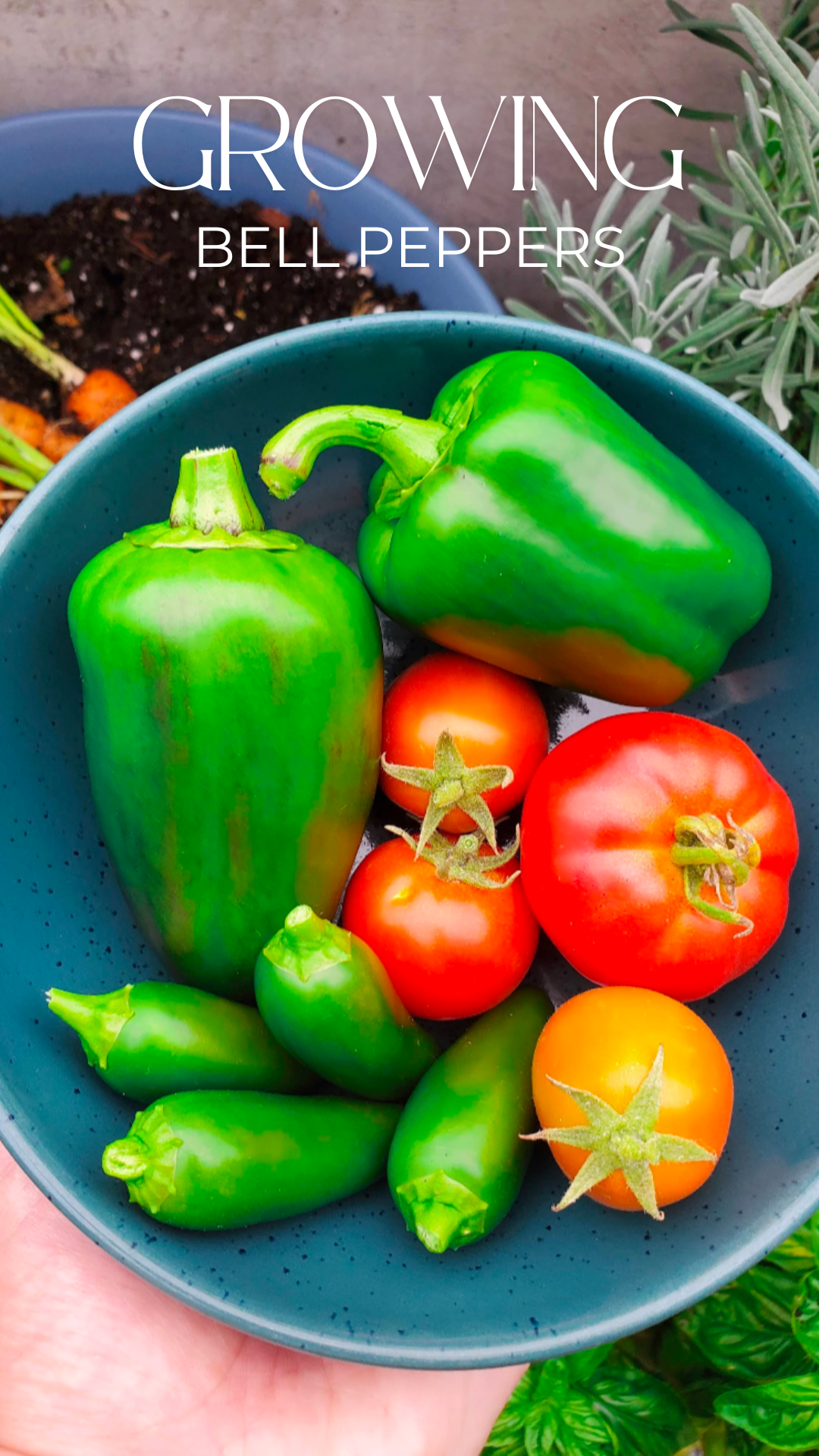
Timing
Start seeds indoors 8–10 weeks before your last expected frost date. Bell peppers require warm soil, so using a heat mat can help with germination. Transplant outdoors once the risk of frost has passed and plants have at least 3–4 true leaves.
Starting
Sow 2–3 seeds per pot, about ¼ inch (0.5–1 cm) deep. Once seedlings are 3–4 inches tall and have 3-4 true leaves, thin to one plant per pot by snipping the weaker seedlings at the base. Keep the strongest, healthiest seedling.
Growing
Bell peppers are ready to transplant outdoors once the danger of frost has passed, the plants are around 6–8 inches tall with a sturdy stem and have at least 3–4 true leaves.
Before transplanting, harden off the seedlings for about a week before transplanting to prevent transplant shock. Gradually expose seedlings to the outdoors, starting with a few hours of shade and increasing sun exposure and duration.
Bell Peppers require a 5-gallon container (12-inch diameter & depth minimum) with good drainage and thrive in full sun — aim for 6–8 hours per day. Keep soil consistently moist but not waterlogged. Staking or caging may help support the plant as it grows and fruits.
Harvest
Bell peppers are usually ready to harvest 60–90 days after transplanting. You can pick them green for a crisper, slightly bitter flavor, or wait until they turn red, yellow, orange, or purple for a sweeter taste.
Use clean garden shears or scissors to cut the peppers from the plant to avoid damage — Regular harvesting encourages more fruit production.